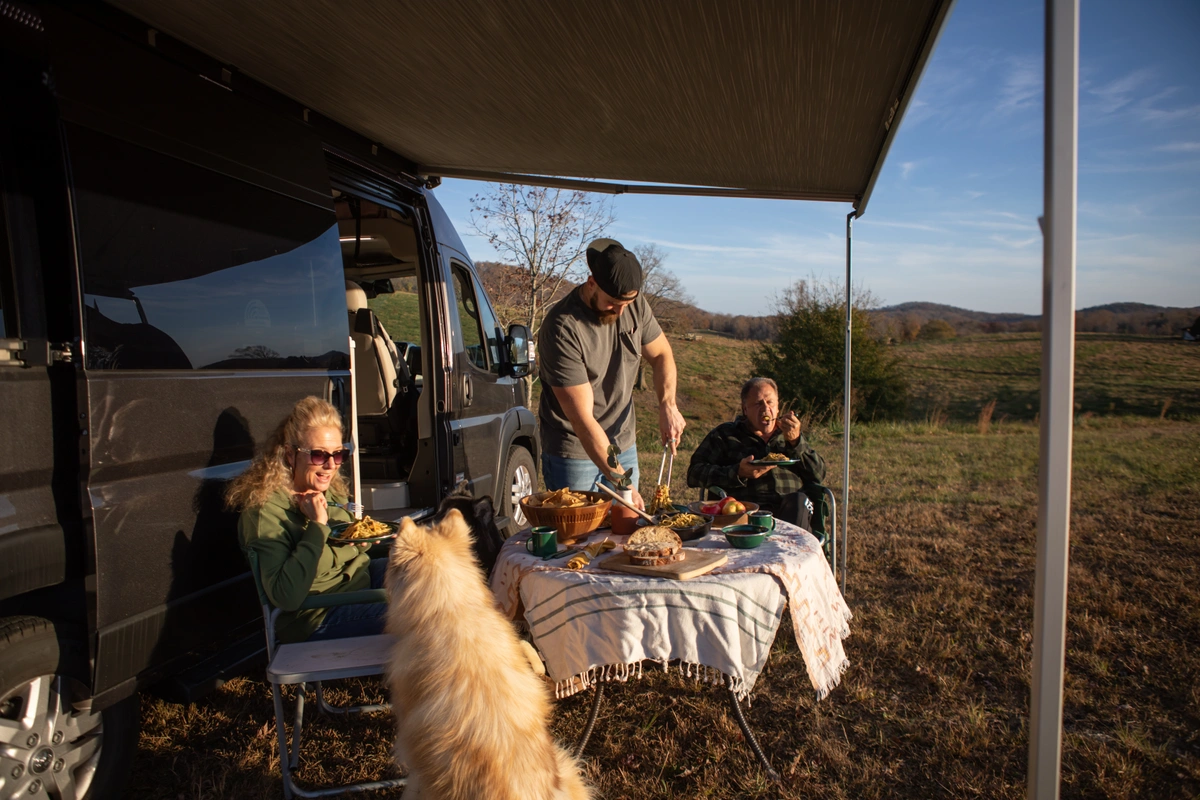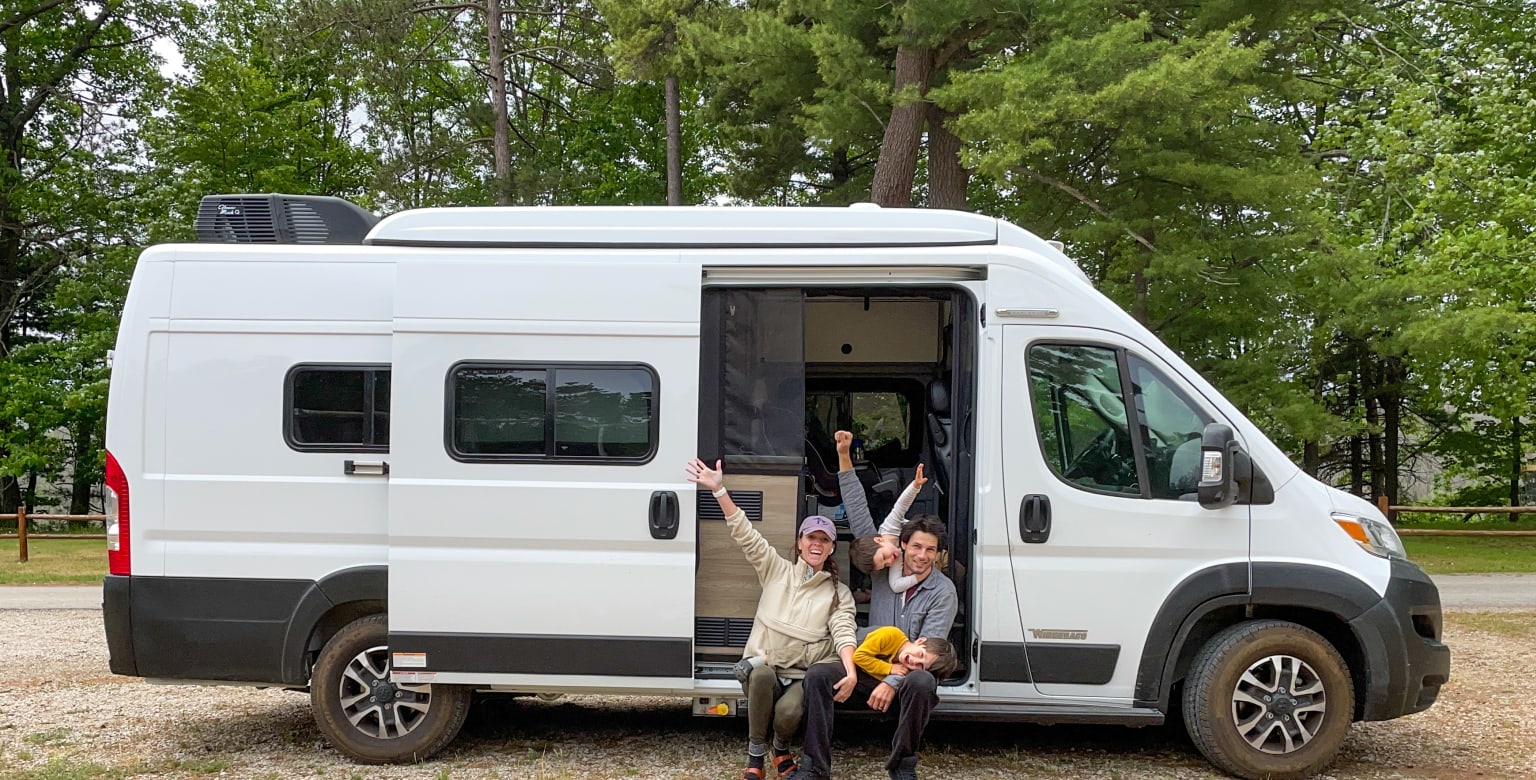If you travel often in an RV, you’re probably already a member of Mother Nature’s gym. You likely know that exercise and spending time outside are both boons to physical and mental well-being. Combine them, and your dopamine skyrockets.
We all know and love a good wilderness walk or hike. However, if you’re looking to level up your fitness game in the great outdoors, there’s no better activity than trail running. This form of exercise is as rewarding as it is challenging. For everything you need to know about the sport, read on.
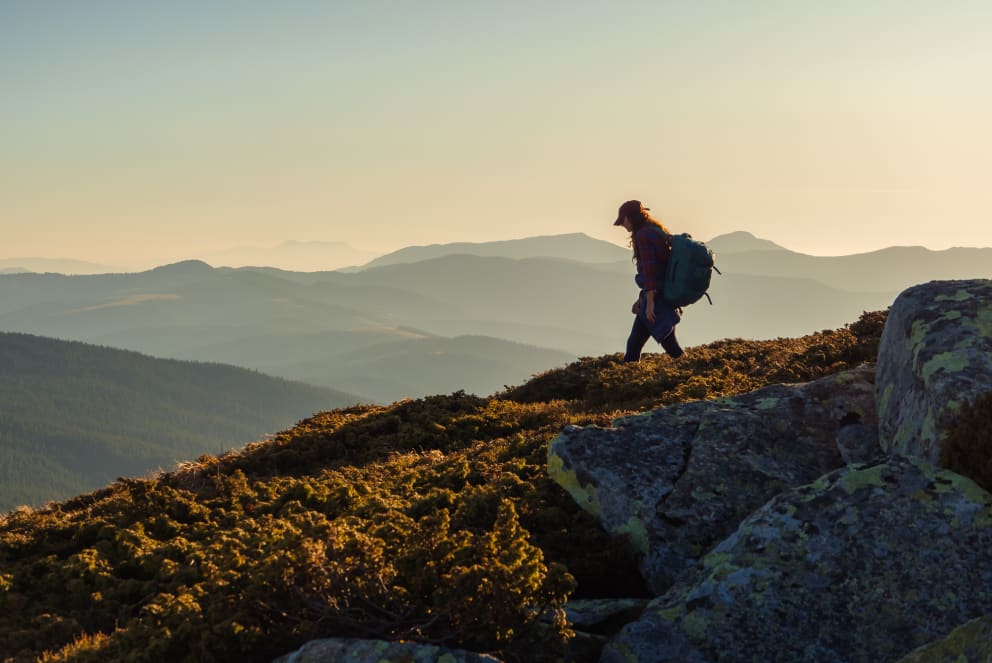
What is Trail Running?
As the name suggests, trail running involves running on trails in nature. Unlike paved roads and athletics tracks, dirt trails feature a wide variety of terrain. You might be switching directions at the drop of a hat or ascending a massive hill. With the uneven surface of trails, you’ll also need to be more aware of how your feet land. While these factors might sound tricky, they are also responsible for some of the sport’s biggest perks. Plus, you’ll be surrounded by beautiful scenery every step of the way.
The Benefits of Trail Running
Now that you have an idea of what trail running is, let’s get into the many reasons to add this form of exercise to your travel routine. These benefits mainly fall into the categories of convenience, physical health, and mental health.
Compatibility with the RV Lifestyle
If you’re regularly visiting majestic wilderness areas, why not take full advantage? With trail running, you’ll get to work up a sweat while exploring your surroundings, rather than being limited to stationary exercises in your motorhome or at your campsite. The minimal equipment needed for trail running is also convenient for RVers.
Unlike road running, trail running gives you a reason to get off the beaten track and find hidden gems wherever you go. The sense of variety and adventure is perfectly suited to the road warrior mentality.
Running also allows you to hit your workout goals faster than hiking. It is ideal for digital nomads who want to squeeze in a quick fitness session before or after work. The same applies to driving-heavy days–you can work out any stiffness in a jiffy before it gets dark. Plus, the core strength you’ll build can make future long stretches of sitting more comfortable.
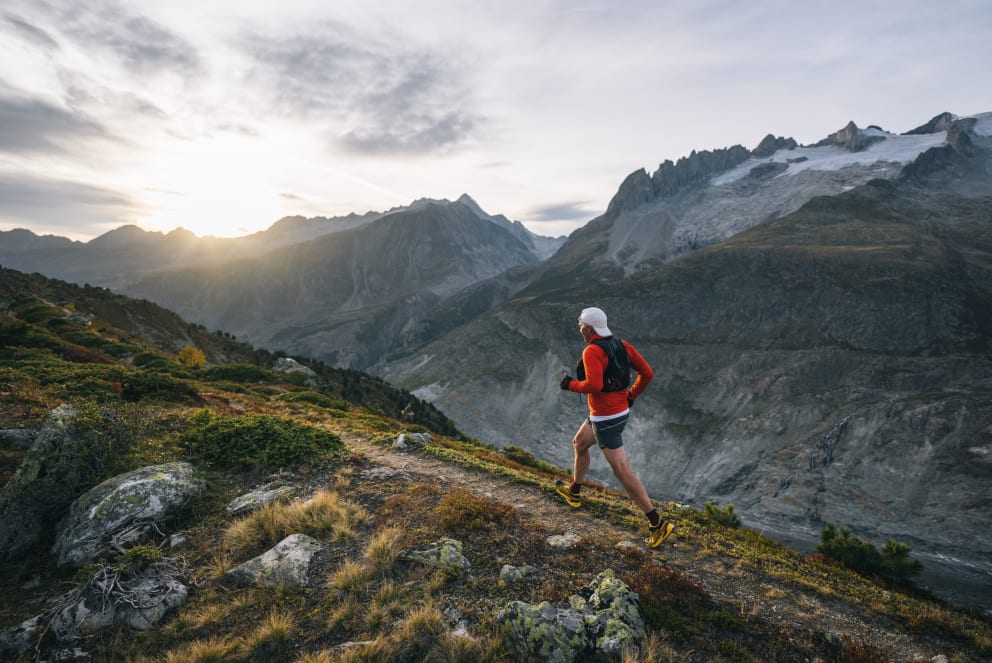
Physical Health Benefits
Speaking of core strength, trail running targets nearly every aspect of physical fitness imaginable. Running is clearly a form of heart-healthy cardio, but trail running goes a step further. As you navigate the uneven terrain of trails, you’ll also build balance, agility, and coordination. These skills become increasingly important as we age.
The long-term benefits don’t end there. Trail runners are actually less likely to get injuries than road runners. This can be attributed to two factors. First, dirt paths are more gentle on joints than paved paths. Second, the unpredictability of varied terrain means trail runners use different muscles with each step and avoid repetitive strain issues.
Mental Health Benefits
We’ve all heard of a “runner’s high,” and perhaps you’ve experienced one firsthand. This endorphin rush busts stress while providing an intoxicating sense of euphoria. Better sleep quality, mood, and concentration are also side effects of the sport.
Trail running expands upon these general benefits of running in several ways. As you make quick assessments of how to handle your ever-changing surroundings, you’ll be building mental agility. The need to constantly focus on the placement of your feet can also help you get into the zone and find more clarity than you might on a humdrum roadside run. Lastly, the challenge of bounding through nature’s obstacle courses can be quite empowering.
In general, exercise and time in nature are both great for mental health. When you trail run, all of your senses are engaged. The fresh air, bird song, forest scents, and–of course–stunning views can do wonders for your state of mind.
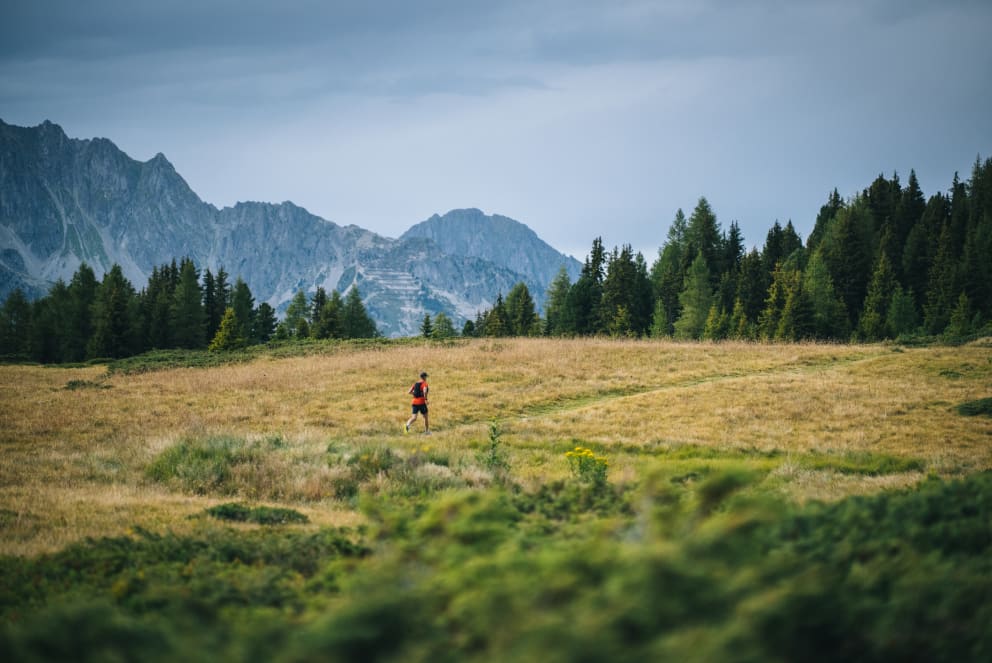
How to Find Good Trails for Trail Running
So you’re sold on the sport–how do you get started? Many hiking trails and walking paths are suitable for trail running. However, you'll want to avoid paths with too many tripping and slipping hazards, such as roots, mud, and loose gravel on inclined surfaces. Narrow trails with steep drop-offs on the side are not safe for running, while routes with rocky scrambles can also get in the way of your flow.
Luckily, it is easy to find ideal trail running routes with apps/websites like All Trails and the Trail Run Project. All Trails–true to its name–is a database for many different sports. Look for the activity filter to find running-specific trails. Both platforms let you narrow your location-based searches by length, difficulty level, and other filters. However, the Trail Run Project also includes a helpful “runnable” percentage score for each trail and more details on grades throughout the route. Because both platforms are compiled of user-generated information, it is worth cross-referencing.
Safety and Gear Recommendations
As we discussed above, trail running is a relatively safe form of exercise. However, there are still a few precautionary measures you should take. When you’re first starting, level up slowly. Don’t try anything crazy for your first excursion. While you’re running, stay focused to avoid any hazards in the path. If you anticipate that conditions could be muddy or icy that day, skip your run. Lastly, the right gear can prevent injuries.
Dedicated trail running shoes are an important investment if you plan to incorporate this activity into your fitness routine. The softer soles of trail running shoes are built with more traction to keep you upright on uneven terrain. The midsole is often reinforced to protect runners from stray branch punctures. Some styles have added features like waterproof fabric or ankle support. In addition to trail running shoes, you should purchase an ergonomic running hydration belt or pack if you plan on tackling any routes long enough to require a hydration break. Optional supplies include wireless running headphones, chafing creams, and energy gels or snacks.
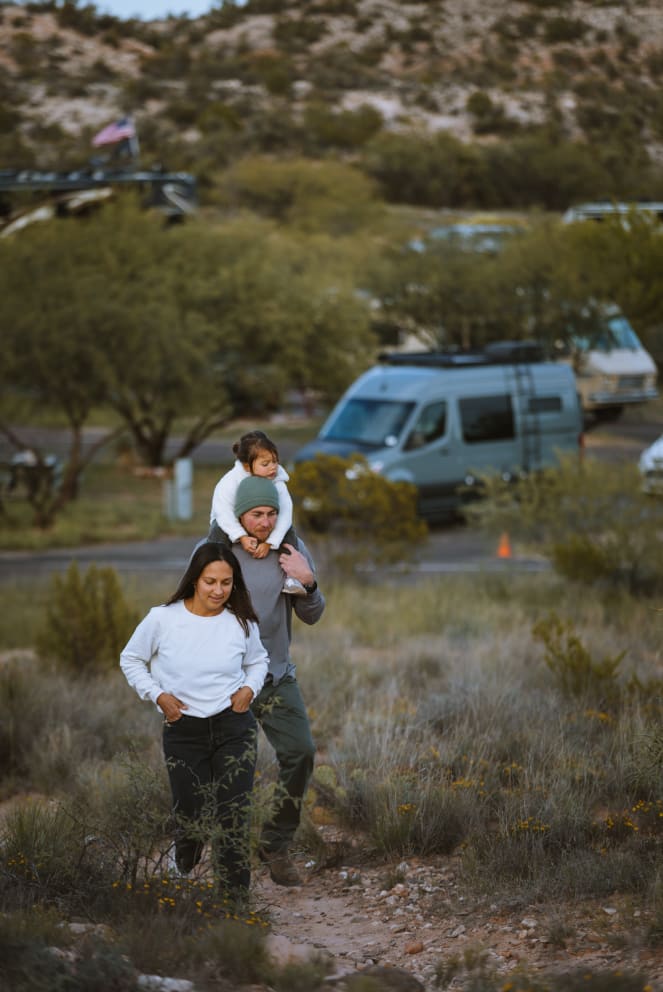
Trail Running and RVing
The adventurous philosophy of trail running and nomadic spirit of RVing go together like PB&J. When it comes to practicality, road warriors are also perfectly positioned to take up the hobby. Your home on wheels allows you to camp more comfortably and for longer than a tent would. And because many campsites connect directly to nature paths, you can roll out of bed and hit the trail first thing in the morning.
If you’re still looking for your trailblazing vehicle, visit La Mesa RV. We carry a wide range of rigs, from nimble Class B camper vans to large family-friendly Class A motorhomes. Whatever style of travel you have planned, we’ve got you covered!

